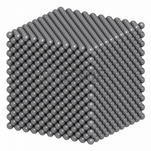Solar collectors
Applications > Home
| Solar collectors | ||||||||
The standard solar collectors made of polypropylene copolymer, also called solar panel or solar heater, are connected to the pump and filter system of the pool without additional equipment, the water circulates through them flowing back with an increase in its temperature of 4 ÷ 7 ° C, depending on the climate can reach 27 ÷ 29 ° C, with a capacity of 2700 Kcal / m2 equivalent to 1000 BTU. Thanks to the capture of UV rays, which pass the same on a cloudy day, on the surface of the collectors the water is heated by heat transfer. Ideal to increase the temperature of your pool at a zero cost and allow its use even in all seasons. |  | |||||||
| Solar collectors in thermally conductive polypropylene | ||||||||
The standard solar collectors made of thermally conductive polypropylene, can increase the temperature of 10 ÷ 15 ° C, depending on the climate can reach a temperature above 33 ° C at a zero cost reaching above 5400 Kcal / m2 equivalent to 2000 BTU. |  | |||||||
| Thermal conductivity | ||||||||
The value of the thermal conductivity of plastics is small. The thermal conductivity of an amorphous polymer (ABS, PC, PMMA, SAN, etc.) is generally quite low 0.1 to 0.25 W / mK. Metals, for example, have thermal conductivities 2000 times greater (160 W / mK) than plastics, this is due to the absence of free electrons in the plastic material, while the polymers heat transfer is made thanks to the vibration of the crystalline network. Therefore, only high crystallinity polymers can transmit heat. Also the semi-crystalline ones (PA, PBT, PP, etc.) are not very efficient thermal conductors, because the presence of an amorphous phase inside them reduces the transmission of heat. The thermally conductive polymer products are characterized by a high efficiency in heat transfer in fact they have thermal conductivities 200 times higher than ordinary technical thermoplastics. The use of these products allows the elimination of the heat produced for example from electronic and electrical devices, favoring the transport of heat by conduction as well as by natural convection and are available in both electrically insulating and conductive versions. 5% Nichel steel: 29 W / mK Alluminium: 220 W / mK Water: 0.63 W / mK The combination of different materials of load and resins, allows the realization of a wide range of products, thermally conductive, that thanks to the use of materials of load, provide values of thermal conductivity included between 1 and 40 W / mK. |   | |||||||
